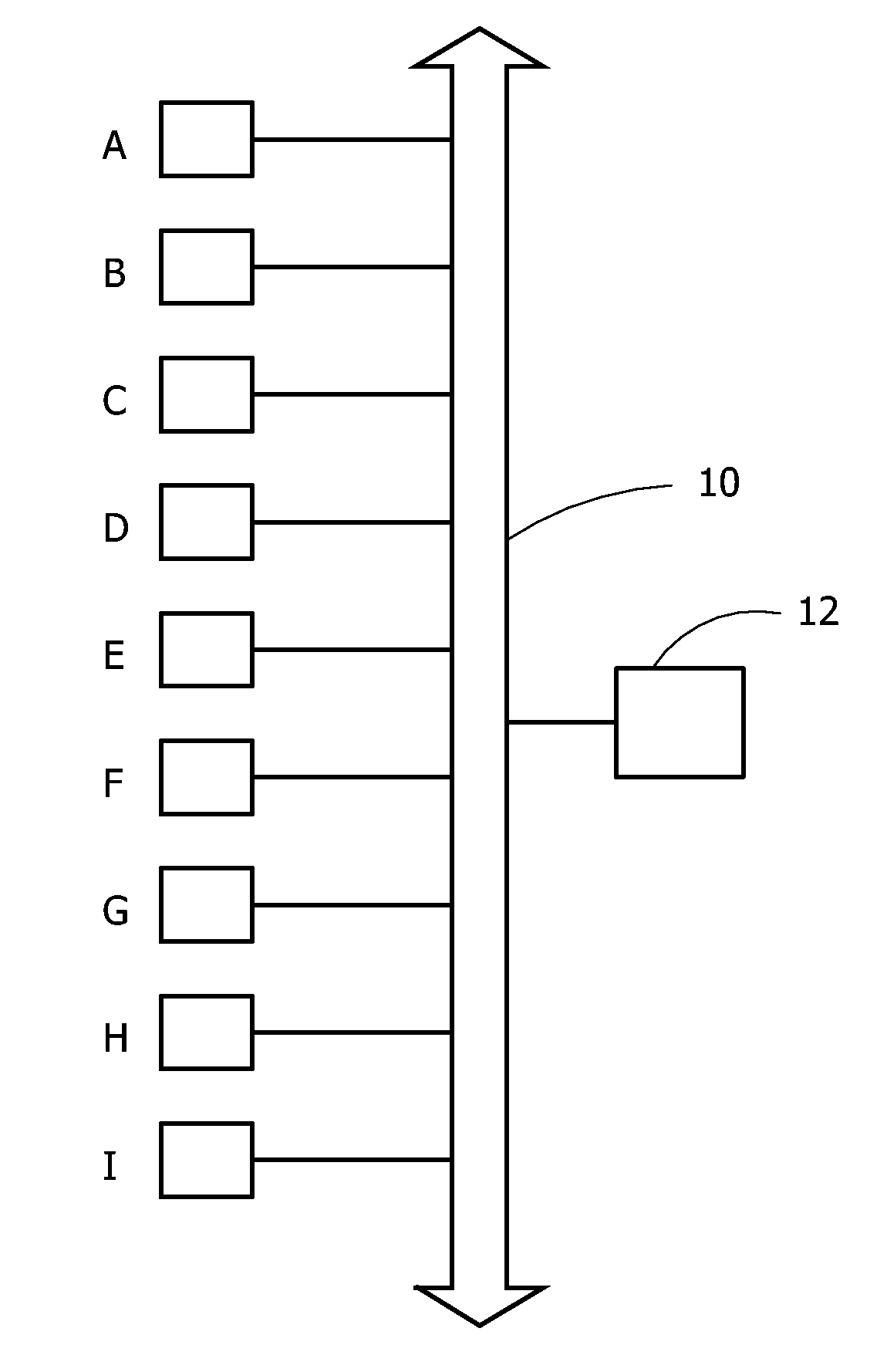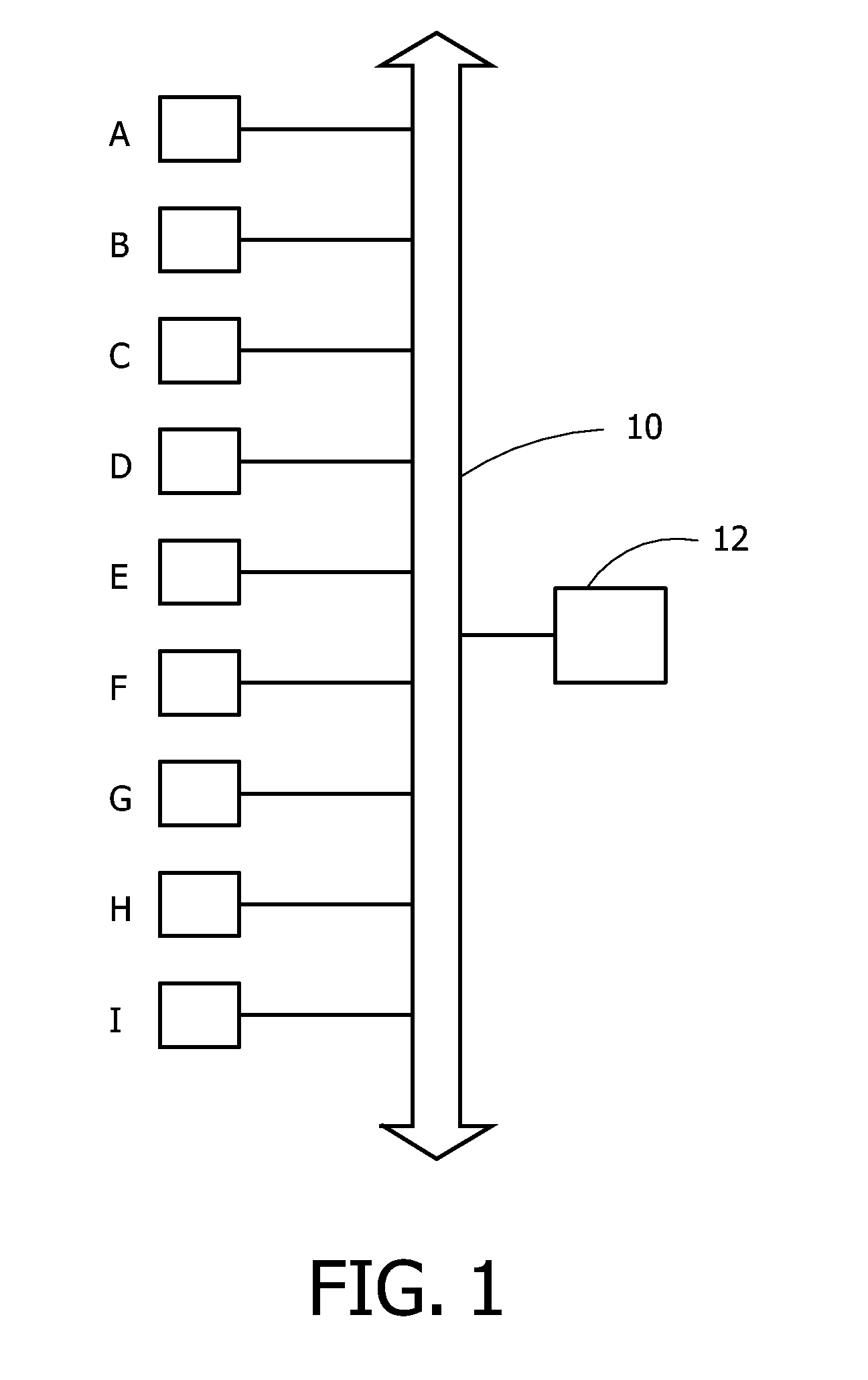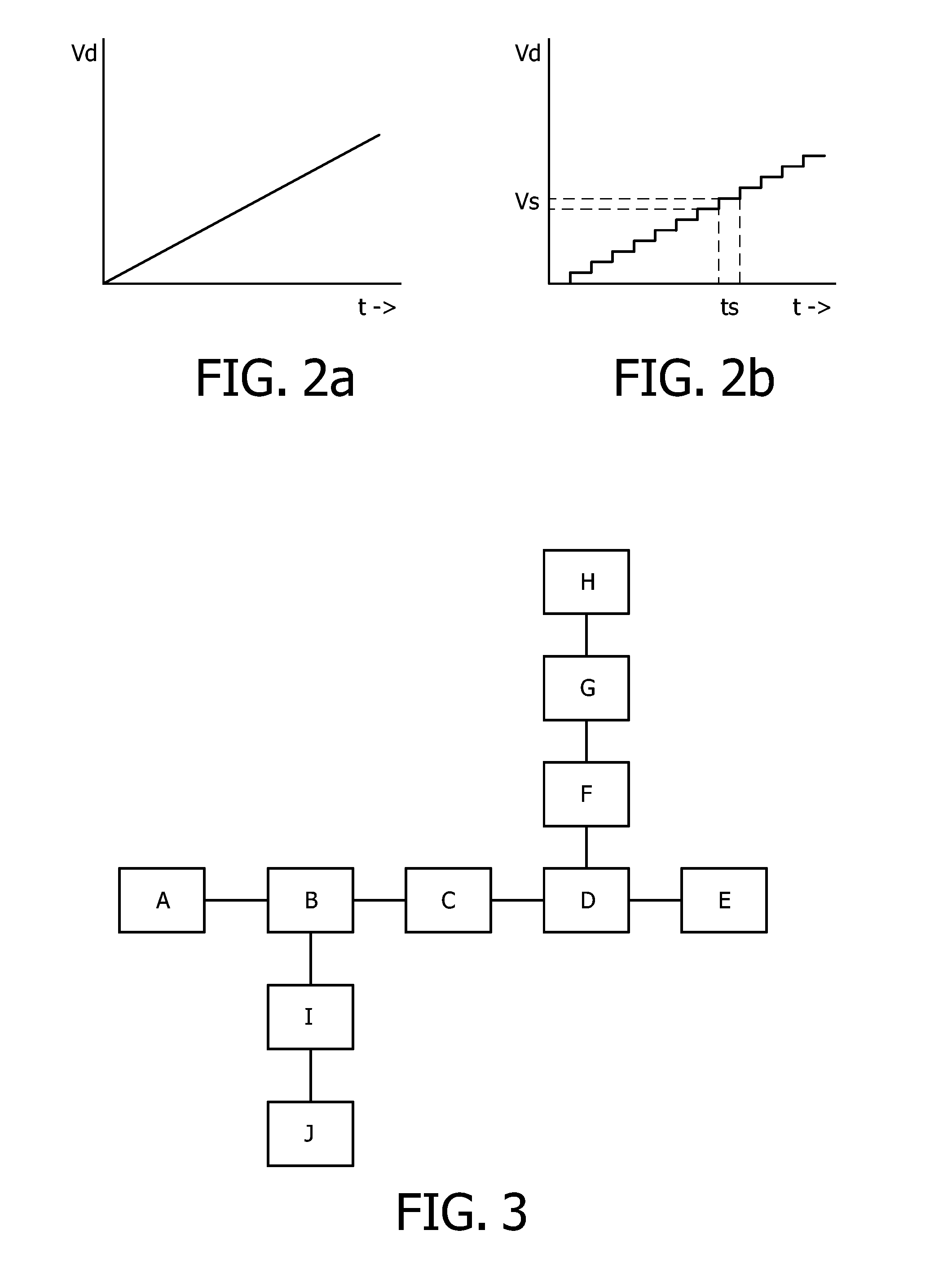Method to Determine a Relative Position of Devices in a Network and Network of Devices for Carrying Out the Method
a technology of relative position and network, applied in the field of method to determine the relative position of devices in a network and the network of devices for carrying out the method, can solve the problems of time-consuming and difficult to activate the device, and achieve the effect of less work
- Summary
- Abstract
- Description
- Claims
- Application Information
AI Technical Summary
Benefits of technology
Problems solved by technology
Method used
Image
Examples
Embodiment Construction
[0042]FIG. 1 shows diagrammatically a network for the method according to the invention. Herein, 10 is a diagrammatic power cable, 12 is a control unit, while A through I are nine devices which are connected via the power cable 10.
[0043]Such a network could e.g. be a lighting network, a video camera circuit, an alarm network and so on. The arrow heads at the ends of the power cable 10 indicate that in each direction more, or less, devices may be connected. Before carrying out the method, the devices have a unique ID, but it is not yet known where those devices are located.
[0044]The method of the invention could be worked as follows. A device is selected, e.g. randomly. Suppose a device is selected which will (later) turn out to be the device denoted F in the FIG. 1. In principle, any other device could also be the selected device. This will be discussed further with reference to FIG. 3
[0045]As a first step, a synchronization of all devices A-I is carried out. Thereto, the selected d...
PUM
 Login to View More
Login to View More Abstract
Description
Claims
Application Information
 Login to View More
Login to View More - R&D
- Intellectual Property
- Life Sciences
- Materials
- Tech Scout
- Unparalleled Data Quality
- Higher Quality Content
- 60% Fewer Hallucinations
Browse by: Latest US Patents, China's latest patents, Technical Efficacy Thesaurus, Application Domain, Technology Topic, Popular Technical Reports.
© 2025 PatSnap. All rights reserved.Legal|Privacy policy|Modern Slavery Act Transparency Statement|Sitemap|About US| Contact US: help@patsnap.com



